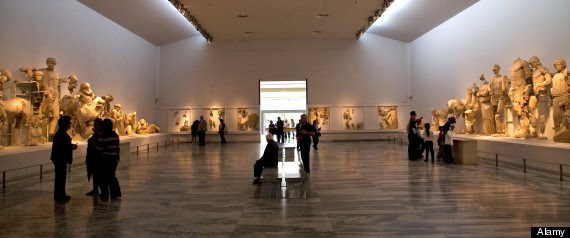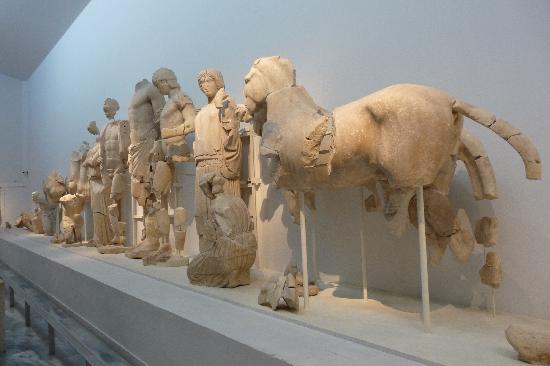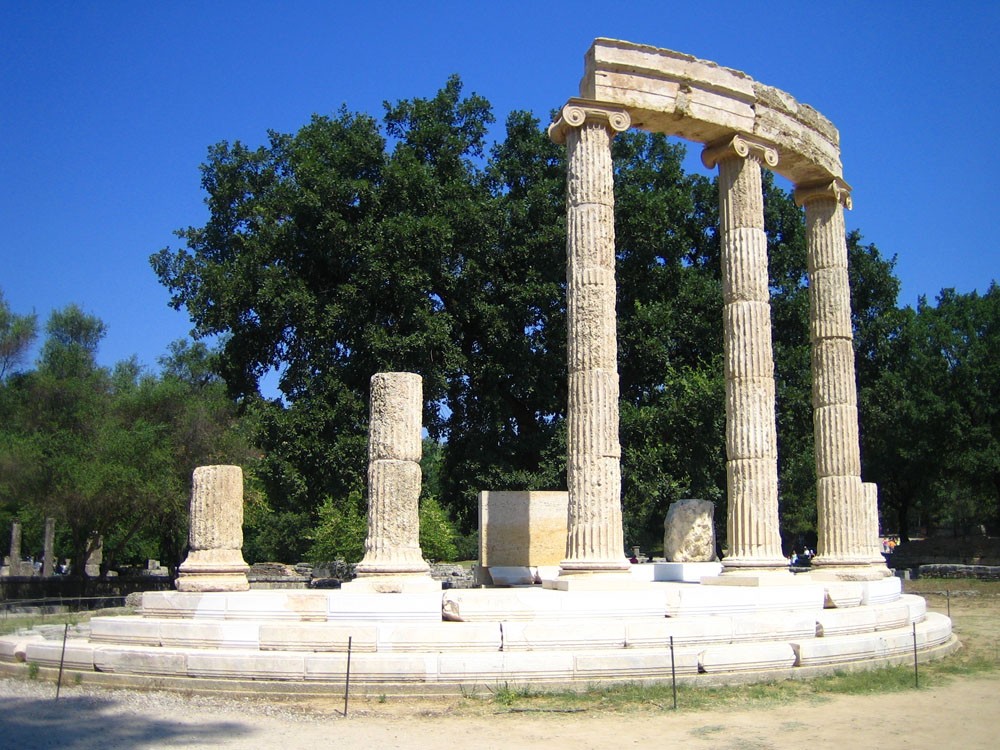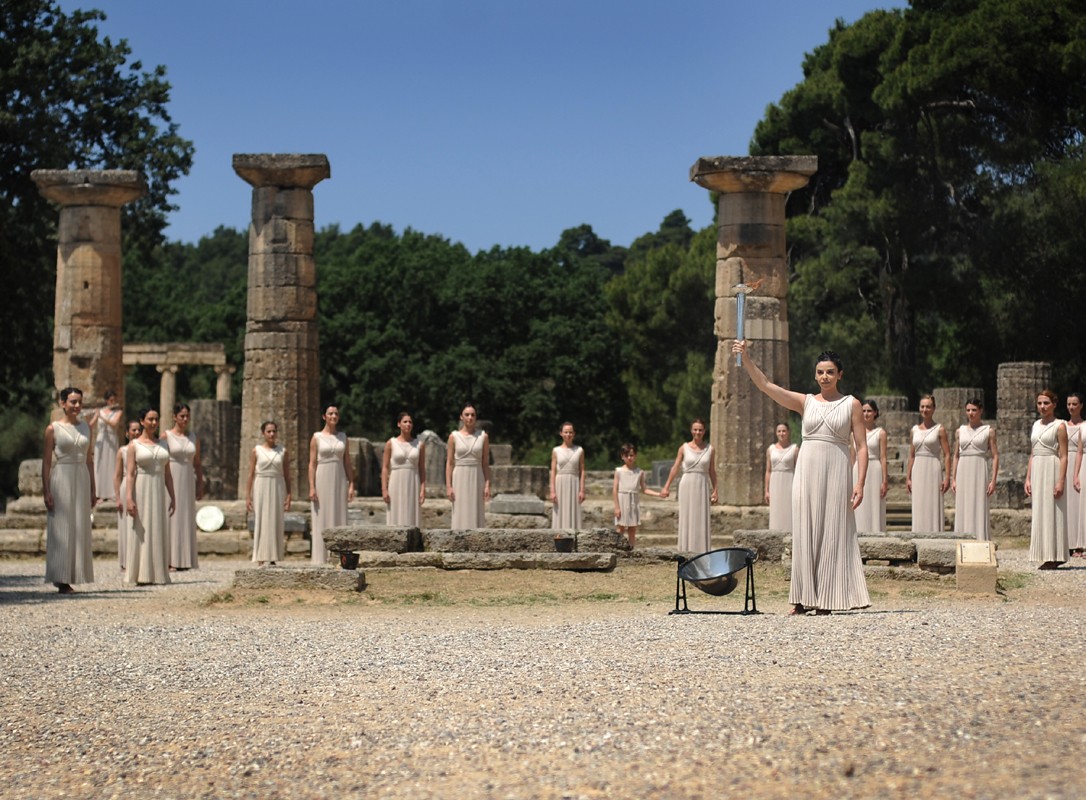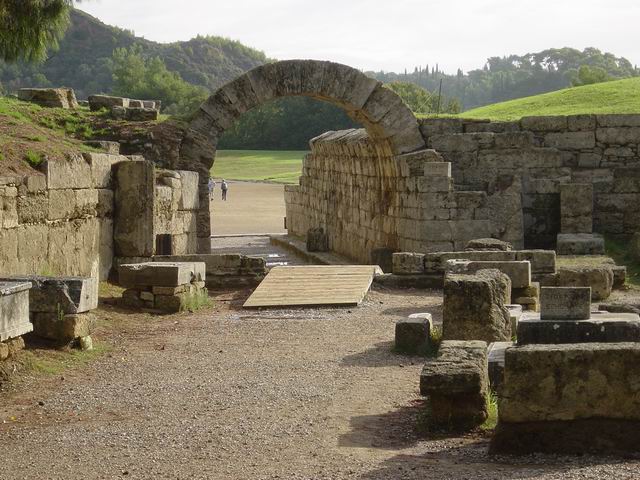Olympia, the sanctuary of Zeus and birthplace of the Olympic Games, lies in a verdant valley at the confluence of the rivers Alpheios and Kladeos. A landscape of great natural beauty, the whole valley was in ancient times thickly wooded and full of wild olive trees, from the leaves of which were made the wreaths that crowned the Olympian champions; hence the site was named Altis, meaning grove.
The beginnings of the sanctuary and its games are hazed in myths: Zeus prevailed in Olympia after dethroning his own father Cronus, who was worshiped upon the namesake hill to the north of the sanctuary. As to who was the founder of the games, several heroes claim the title; among them Hercules and Pelops. We reach the realm of history in 776 BC, the year of the first recorded athletic event that humanity nowadays celebrates as the Olympic Games. Their ancient name was Olympia and they were held every four years in honour of Zeus. The Olympiad, the four-year period between two successive celebrations, became the standard chronological system of the ancient Greek world. The last Olympics of antiquity were held in AD 393, shortly before the emperor Theodosius I banned paganism and closed down the ancient sanctuaries. Then came successive earthquakes and river floods to bury the ancient ruins for centuries until the archaeological excavations brought them back to light in 1875. Twenty years later, in 1896, revived the first, and now international, Olympic Games of the modern era.
The sanctuary consists of an unordered arrangement of various buildings. Enclosed within thetemenos (sacred enclosure) are the Temple of Hera, the Temple of Zeus, the Pelopion, and the area of the altar, where the sacrifices were made. To the north of the sanctuary can be found the Prytaneion and the Philippeion, as well as the array of treasuries representing the various city-states. The Metroon lies to the south of these treasuries, with the Echo Stoa to the east. The hippodrome and later stadium were located east of the Echo Stoa. To the south of the sanctuary is the South Stoa and the Bouleuterion, whereas the Palaestra, the workshop of Pheidias, the Gymnasion, and the Leonidaion lie to the west. Olympia was also known for the gigantic ivory and gold statue of Zeus that used to stand there, sculpted by Pheidias, which was named one of the Seven Wonders of the Ancient World by Antipater of Sidon. Very close to the Temple of Zeus which housed this statue, the studio of Pheidias was excavated in the 1950s.
